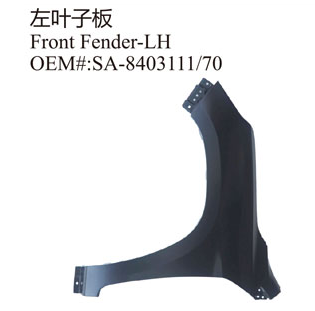As the brake pads of auto parts are consumables, the more driving kilometers, the greater the wear of the brake pads. When the wear reaches the critical point, it must be replaced.
Generally speaking, under normal driving conditions, we should check the brake pads every 5000 km. In addition to checking the remaining thickness, we also need to check the condition of surface wear, such as whether there is any difference in the degree of wear between the left and right sides, whether the return is free, etc.
The brake pad is composed of friction material and iron lining plate. Do not wait until the friction material is polished, which will reduce the braking effect and bring greater safety risks. Now many vehicles have their own brake pad alarm function, which will prompt the owner to replace when the wear limit is reached. The owner also needs to pay more attention to this.

In addition, it is better to replace the parts provided by the original manufacturer, so that the braking effect between the brake pad and the brake disc is good, and the running in time is reduced. After replacement, the owner must first step on the brake several feet to eliminate the gap between the grinding disc and the brake disc.
In general, the new brake pads need to run in for about 200 km to achieve good braking effect. Therefore, the car owner should still drive carefully after changing the brake pads.
Three simple steps teach you how to self check the brake pads.
It's better to ask for people than yourself. Here we will introduce several simple and effective self checking brake pad methods that save time and money - "one sleep, two listen and three check".
1、 Feel the intensity. When driving, do you feel like you can't stop the car. If you feel that the brake is very hard, it is likely that the brake pads become soft, thin and basically lose friction.
2、 Listen to the voice. If there is a sound of "iron rubbing iron" when the brake is lightly applied, the brake pads must be replaced immediately. This sound is caused by the limit marks on both sides of the brake pads have directly rubbed the brake pads. In this case, the owner must also check the condition of the brake disc. As the price of the brake disc is higher than that of the brake disc, it is suggested that you should check the brake disc frequently to avoid damaging the brake disc.
3、 Check the thickness. The normal brake pad thickness is generally about 1.5cm, and the friction thickness will gradually become thinner with the increase of the use times. When we use the naked eye to observe that the thickness of the brake pad is only about 1 / 3 of the original thickness (about 0.5cm), the owner should increase the self inspection frequency and be ready to replace at any time. Generally speaking, after driving 60000 km or so, car owners should consider replacement.
Copyright By © Jiangsu Halreal Vehicle Industry Co., Ltd. Powered by Yicheng Network